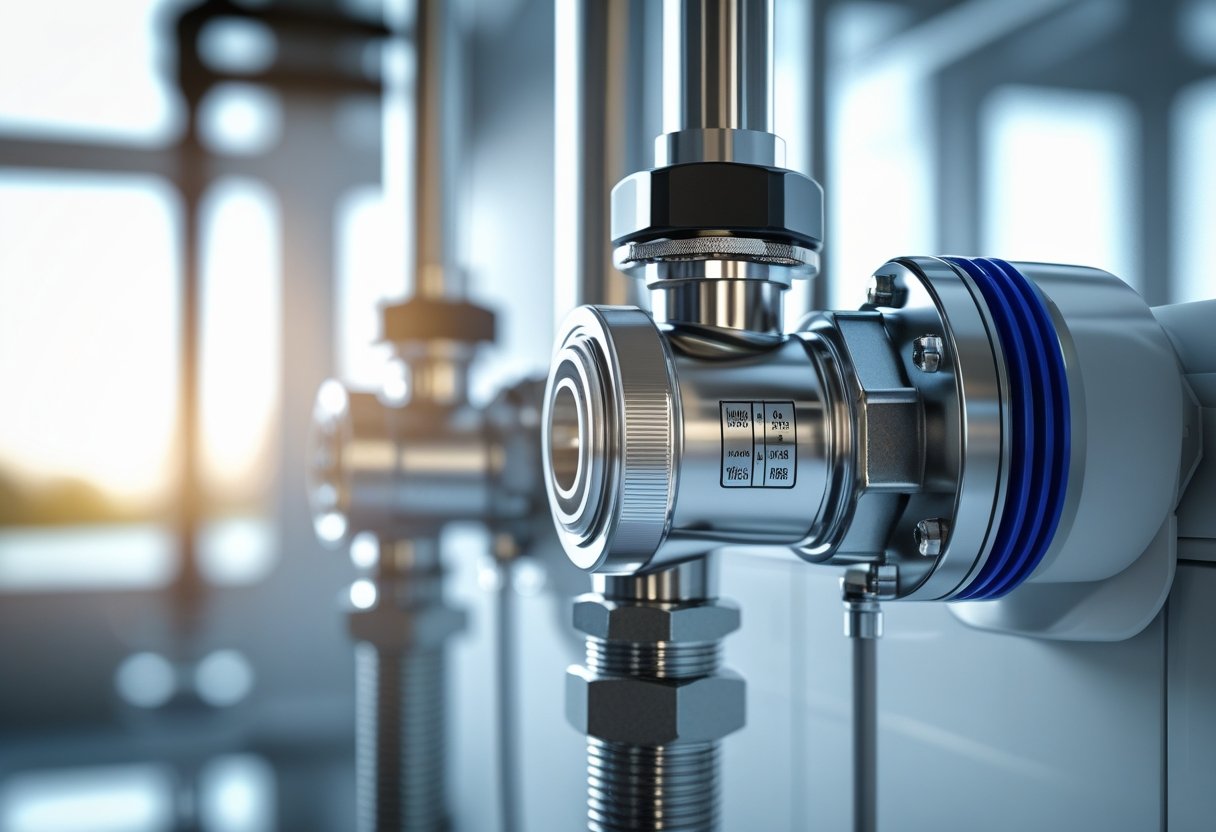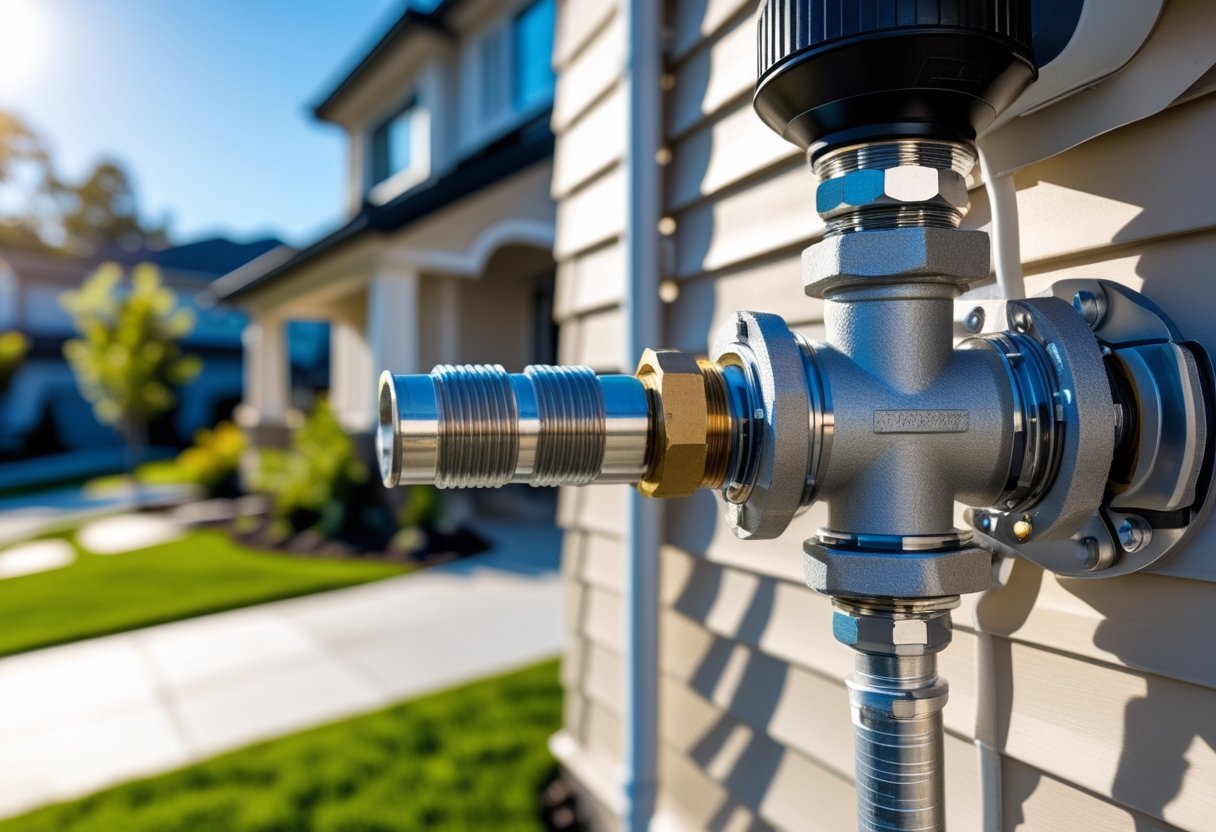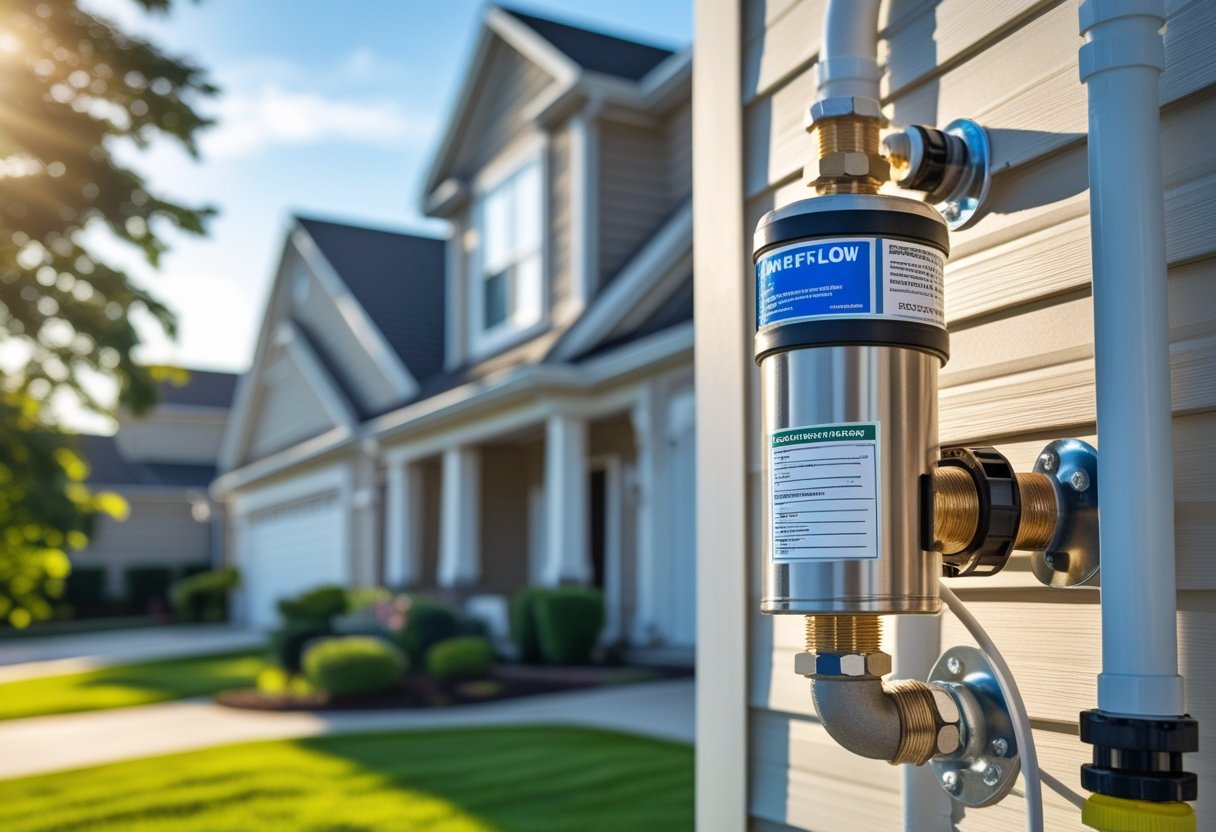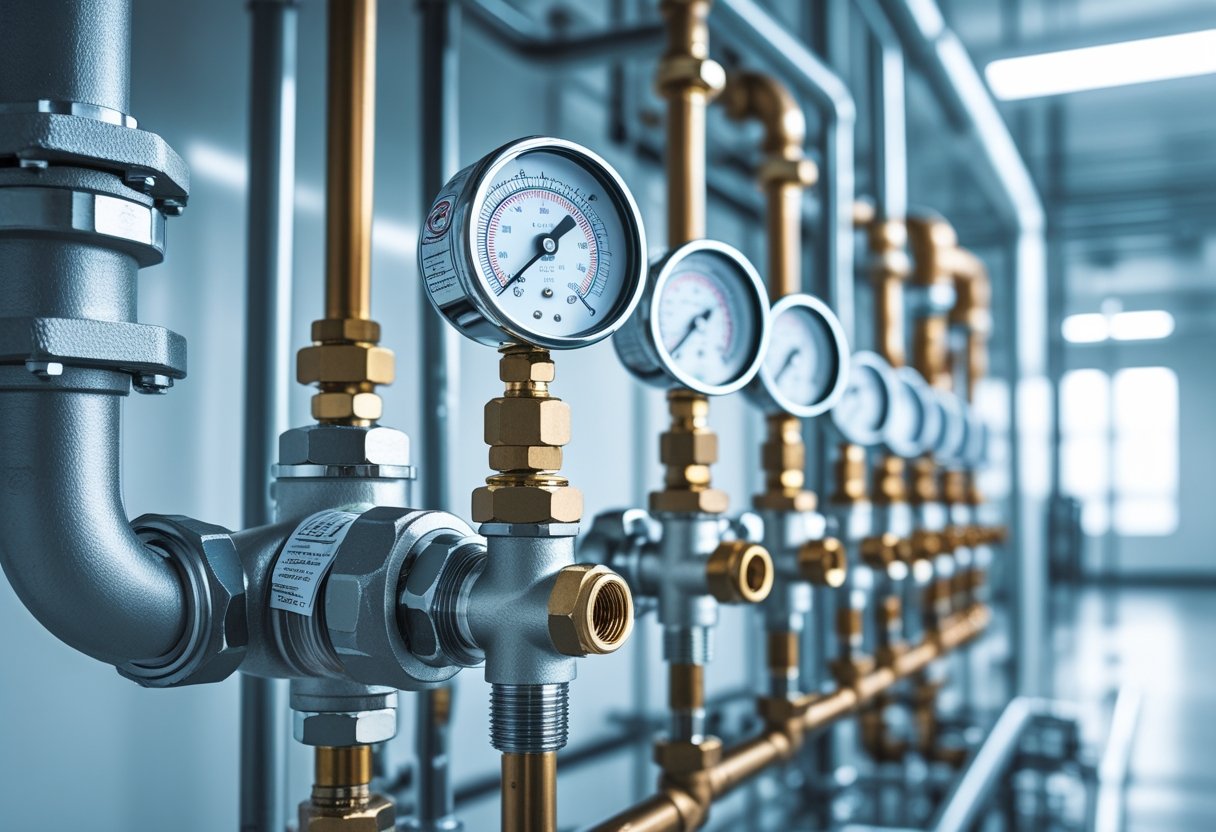Backflow preventers protect your home's clean water supply from contamination, but when they break down, repair costs can catch homeowners off guard. Most backflow repair costs range from $200 to $800, depending on the type of damage, location accessibility, and local labor rates. Understanding what drives these costs helps you make smart decisions when facing repairs.
We've seen too many San Diego homeowners delay backflow repairs to save money, only to face much higher costs later. A small leak or valve issue that costs $300 to fix today could turn into a $1,200 replacement job if left unchecked. Location matters too - if your backflow preventer sits in a hard-to-reach spot, expect labor costs to climb.
Smart budgeting starts with knowing what factors affect your final bill and how local regulations impact your options. In this article, you’ll learn how backflow repair cost is calculated—by device type, accessibility, and local labor, and when replacement is the smarter spend.
Let’s break down the key points you should consider:
- What drives backflow repair costs up or down
- How much backflow repair usually costs in San Diego
- What happens if you ignore a damaged backflow preventer
- Tips to stay compliant without overspending on repairs
- Get a clear estimate from Pacific Backflow before you commit
Keep reading! We'll break down the real costs you can expect in San Diego, show you what happens when repairs get postponed, and share practical ways to stay compliant without breaking your budget.
What drives backflow repair costs up or down
Several key factors determine whether you'll pay hundreds or thousands for backflow repair. The biggest cost drivers are the complexity of the repair needed, the specific type of device you have, and how easy it is for technicians to access your system.
The difference between a simple fix and a full replacement
Simple repairs like replacing worn seals or springs typically cost between $150-$400. These fixes address common issues like minor leaks or pressure drops.
Common simple repairs include:
- Seal replacement
- Spring adjustments
- Basic valve cleaning
- Check valve repairs
Full replacements become necessary when internal components fail completely. This can cost $800-$2,500 depending on your device type.
We see replacement needed most often with older assemblies where parts become difficult to find. Labor costs increase significantly because technicians must remove the entire unit and install new equipment.
Signs you need replacement:
- Multiple component failures
- Cracked housing
- Obsolete parts
- Failed testing after multiple repair attempts
The age of your backflow preventer plays a major role. Units over 10 years old often require replacement rather than repair.
What type of backflow device you have (and why that matters)
Different backflow devices have vastly different repair costs. Simple atmospheric vacuum breakers cost $50-$200 to repair or replace.
Device types by repair cost:
Device Type
Repair Cost
Replacement Cost
Atmospheric Vacuum Breaker
$50-$150
$100-$300
Pressure Vacuum Breaker
$200-$500
$400-$800
Double Check Valve
$300-$700
$600-$1,500
Reduced Pressure Zone
$400-$1,000
$800-$2,500
Reduced pressure zone assemblies cost the most to repair. They have more complex internal parts and require specialized knowledge to service properly.
Commercial-grade devices typically cost more than residential units. The parts are larger and more expensive to manufacture.
We find that newer backflow devices often have readily available parts. Older or specialty models may require custom orders that increase both part costs and wait times.
How location and accessibility can increase labor cost
Hard-to-reach backflow preventers significantly increase labor costs. Technicians charge more when they need special equipment or extra time to access your device.
High-cost locations include:
- Underground vaults
- Tight crawl spaces
- Rooftops
- Areas requiring excavation
Standard repairs in easily accessible locations take 1-2 hours. Difficult locations can extend work time to 4-6 hours.
We see the highest labor charges for devices installed in concrete vaults or underground pits. These locations often require additional tools and safety equipment.
Urban areas typically have higher labor rates than rural locations. Dense city installations may also present access challenges that increase costs.
Weather conditions can affect outdoor repairs. Winter work or emergency repairs during storms often include premium charges for urgent service calls.
How much backflow repair usually costs in San Diego
Backflow repair costs in San Diego typically range from $50 to $300 for basic fixes, though replacement units can cost significantly more. Testing failures often trigger additional expenses beyond the initial repair quote.
Average price range for residential backflow preventer repair
Most backflow preventer repairs in San Diego fall between $50 and $300. The final cost depends on what's wrong with your system.
Simple fixes like replacing worn seals or gaskets usually cost less. More complex problems with internal parts push costs toward the higher end.
We've found that labor rates in San Diego affect the total price. Most repair companies charge between $75 and $150 per hour for their services.
Common repair costs include:
- Seal replacement: $50-$100
- Valve repairs: $100-$200
- Spring replacement: $75-$150
- Check valve issues: $150-$250
Parts availability can change your final bill. Some older backflow preventers need special-order components that cost more than standard parts.
What backflow preventer replacement might cost if repairs aren't enough
When repairs won't fix the problem, we see replacement costs between $300 and $1,500 in San Diego. The price depends on your backflow preventer type and size.
According to Forbes Home, materials for a backflow preventer typically range from $75 to $1,200 depending on type, size, and features, with bronze units costing more than brass.
Residential units typically cost less than commercial ones. A standard ¾-inch residential backflow preventer runs $300 to $600 installed.
Larger systems for commercial properties can reach $1,500 or more. These units need more complex installation work and bigger parts.
Replacement cost factors:
- Unit size and type
- Installation complexity
- Permit requirements
- Location accessibility
Some San Diego areas require permits for backflow preventer replacement. Permit fees add $50 to $200 to your total cost.
Installation labor usually takes 2-4 hours. This adds $150 to $600 to your parts cost.
When a test failure means more than just paperwork
Failed backflow testing creates extra costs beyond the initial test fee. We typically see additional charges of $100 to $400 when devices fail their annual inspection.
Most companies charge for re-testing after repairs. Re-test fees usually cost less than the original test but still add to your bill. According to Forbes Home, plumbers typically charge $45 to $200 per hour depending on location, experience, and job complexity.
Some repair companies include one re-test in their repair price. Others charge separate fees ranging from $25 to $75.
Post-failure costs often include:
- Repair work: $50-$300
- Re-testing fees: $25-$75
- Rush service charges: $50-$100
- Multiple trip fees: $25-$50
Time pressure increases costs when your backflow preventer fails. Many property owners need quick fixes to stay compliant with city requirements.
We recommend budgeting extra money beyond the basic repair estimate. Failed tests often reveal multiple problems that need fixing.
What happens if you ignore a damaged backflow preventer
Ignoring a damaged backflow preventer creates serious problems that get worse and more expensive over time. Water contamination, property damage, and hefty fines from code violations can cost thousands more than simple repairs.
How leaks can affect your water supply and property
A damaged backflow preventer often develops leaks that create multiple problems for your property. These leaks waste hundreds of gallons of water each month, driving up your utility bills significantly.
Water from backflow preventer leaks can pool around your building's foundation. This standing water weakens concrete and can cause cracks in basement walls. We've seen repair costs reach $5,000 to $15,000 for foundation damage.
The bigger risk is contamination of your water supply. When backflow preventers fail, dirty water can flow backward into clean drinking water. This puts your family or employees at risk for serious illness.
Common contamination sources include:
- Lawn fertilizers and pesticides
- Pool chemicals
- Industrial waste
- Sewage backup
Property damage from leaks also affects landscaping and walkways. Constant water flow erodes soil and kills plants. Replacing damaged landscaping typically costs $1,000 to $3,000.
Why city code violations get expensive fast
Most cities require working backflow preventers by law. When yours fails inspection, you face immediate fines and ongoing penalties until you fix the problem.
Initial violation fines range from $200 to $500 in most areas. But these fines double or triple for repeat violations. We've seen businesses pay over $2,000 in accumulated fines for delayed repairs.
Cities can also shut off your water service for serious violations. Reconnection fees add another $150 to $300 to your costs. Some areas require you to hire a certified professional before they restore service.
Typical violation penalty structure:
- First violation: $200-$500
- Second violation: $400-$1,000
- Third violation: $800-$2,000
- Water shutoff: Additional $150-$300
Commercial properties face stricter enforcement than homes. Restaurants and medical facilities get priority attention from code inspectors because public health risks are higher.
The long-term cost of skipping annual testing and maintenance
Annual testing costs $75 to $150 but prevents much bigger expenses later. Skipping this testing means small problems turn into major failures that cost $500 to $2,000 to fix.
Regular maintenance catches worn parts before they break completely. Replacing a few rubber seals costs $50 to $100. Waiting until total failure means replacing the entire unit for $300 to $800.
We track data showing that untested backflow preventers fail 60% more often than properly maintained ones. These failures happen at the worst times, often requiring emergency repair rates that cost double normal prices.
Insurance companies may deny claims for water damage if you skipped required testing. This leaves you paying thousands out of pocket for damage that maintenance could have prevented.
Testing also keeps your warranty valid. Most manufacturers void coverage if you don't follow their maintenance schedule.
Tips to stay compliant without overspending on repairs
Smart planning and proactive maintenance help reduce repair costs while keeping your backflow system compliant. Early inspections catch problems before they become expensive, certified technicians prevent costly mistakes, and strategic repair choices maximize your budget.
How to avoid surprise costs with early inspections
Regular inspections help us catch small problems before they turn into major repairs. We save money by finding issues early when fixes are simple and parts are cheaper.
Annual testing shows problems while they're still minor. A small leak or worn valve costs much less to fix than a complete system failure. Most repairs caught during routine inspections cost between $75-200 instead of $500-1,500 for emergency fixes.
We should schedule inspections during off-peak seasons when technicians charge lower rates. Spring and fall typically offer better pricing than summer emergency calls.
Keeping detailed records of each inspection helps us track patterns. If pressure readings drop slowly over time, we can plan repairs during our next budget cycle instead of facing surprise costs.
New backflow devices test at 2.0-4.0 PSID and work better than older units with borderline readings. When our readings approach the failure range, we can budget for repairs before the device actually fails.
Why working with certified techs saves you money long term
Certified technicians prevent costly mistakes that untrained workers often make. We avoid expensive do-overs and failed inspections by using qualified professionals from the start.
Licensed techs know local codes and requirements. They complete work correctly the first time, which saves us from compliance penalties and repeat service calls.
Certified technicians carry proper insurance and warranties on their work. If something goes wrong, we have protection instead of paying twice for the same repair.
They also spot potential problems during routine service calls. This early detection helps us plan future repairs and avoid emergency situations that cost three times more than scheduled work.
Quality technicians use proper parts and follow manufacturer guidelines. Cheap repairs from unqualified workers often fail within months, forcing us to pay for the job again.
The benefit of choosing repair over full replacement when possible
Strategic repairs extend device life and cost much less than full replacement. We can often fix specific components for 20-30% of replacement costs.
Most backflow preventers have repairable parts like valves, springs, and seals. These components typically cost $50-150 to replace compared to $800-2,000 for new devices.
However, older devices sometimes need replacement when parts are no longer available. Devices over 15 years old may cost more to repair than replace due to discontinued parts.
We should consider replacement when repair costs exceed 60% of a new device price. This prevents repeated repairs on failing equipment that becomes unreliable.
Budget planning helps us make smart repair versus replacement decisions. Setting aside funds each year lets us choose the most cost-effective option without pressure from immediate compliance deadlines.
Get a clear estimate from Pacific Backflow before you commit
Pacific Backflow provides upfront pricing based on your specific system and location, ensuring you know exactly what repairs will cost. They handle everything from initial inspection to final compliance reporting without surprise charges.
Transparent pricing based on your system and location
Pacific Backflow gives you honest pricing before any work begins. They look at your specific backflow device type and consider your location when creating estimates.
The company has maintained competitive rates while providing professional service. Their pricing structure accounts for different device complexities and local permit requirements.
Key pricing factors include:
- Device type and size
- Location-specific permit fees
- Complexity of required repairs
- Parts needed for your system
You receive a detailed breakdown of all costs upfront. This includes labor, parts, permits, and any filing fees required in your area.
The estimate covers everything needed to bring your system into compliance. You won't get surprise bills after work is completed.
Repairs done right the first time, with no hidden fees
Pacific Backflow focuses on quality repairs that pass inspection immediately. Their experienced technicians work on all device makes and models.
The company guarantees their repair work. If additional issues arise from their work, they handle corrections at no extra cost to you.
Their repair process includes:
- Complete device inspection
- Quality parts replacement
- Thorough testing after repairs
- Compliance certification
You pay exactly what the estimate states. No hidden fees get added during or after the repair process.
Their technicians carry common replacement parts. This means most repairs get completed in one visit without return trips or additional charges.
Full compliance support, from inspection to reporting
Pacific Backflow handles all compliance requirements from start to finish. They manage inspection scheduling, repairs, testing, and required paperwork submission.
The company takes care of filing necessary reports with local authorities. You don't need to worry about missing deadlines or incorrect paperwork.
Complete compliance service includes:
- Initial device inspection
- Required repairs and testing
- Certification documentation
- Report filing with authorities
- Follow-up support if needed
They know local regulations and requirements in their service areas. This ensures your device meets all current standards and passes official inspections.
Their certified technicians provide documentation that satisfies municipal requirements. You receive copies of all certificates and reports for your records.
Conclusion
Understanding backflow repair costs helps us make smart decisions about our water systems. Testing typically costs $75 to $200 per device, while repairs vary based on the problem's complexity.
We save money by catching issues early through regular testing. Small problems cost less to fix than major system failures.
Professional repairs protect our water supply and prevent expensive damage later. We avoid health risks and costly cleanups by maintaining our systems properly.
Budget planning becomes easier when we know what to expect. Set aside funds for annual testing and potential repairs.
We protect our investment by staying proactive about backflow prevention. Regular care costs less than emergency repairs or system replacement.
Professional service ensures our devices work correctly and meet local codes. This prevents fines and keeps our water safe to drink.
Planning ahead for these costs helps us avoid surprises. Most backflow issues are manageable when we address them promptly with qualified technicians.
Request a detailed backflow repair quote with Pacific Backflow today, or schedule service, so we can diagnose your assembly, provide parts-and-labor pricing, and submit the passing compliance test report to your water provider.











